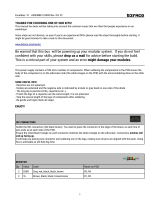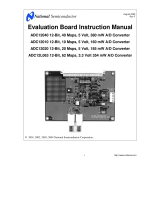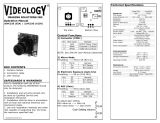
Description
1-5
General Information
The THS7002 EVM is equipped with a separate BNC input connector for each
of the two channels on the module. Each input is terminated with a 50-Ω
resistor to provide correct line impedance matching (Figure 1–3). Note that
using a source with a 50-Ω output impedance will create a voltage divider at
the EVM inputs. Thus, accurate knowledge of the source output
characteristics is required to determine proper input signal amplitudes.
The outputs of the preamplifier stages are routed through 50-Ω resistors to
provide proper cable impedance matching and termination impedance
matching. One of the drawbacks of using this type of impedance matching is
that it places an equivalent 100-Ω load on the output of the preamplifiers.
Although the preamplifier sections have a large output current capability, the
programmable gain amplifier (PGA) sections have a limited current drive
capability. It is recommended that the total impedance placed on the outputs
of the PGA section is at least 500 Ω.
The THS4001 IC and the THS7002 IC are voltage feedback amplifiers. They
follow the classic operational amplifier gain equations:
Inverting Gain
–R
F
R
G
(1)
Non-Inverting Gain 1
R
F
R
G
(2)
The gain of these amplifiers can easily be changed to support different
applications by changing the resistor ratios. Although any of the components
on the EVM board can be replaced with different values, it is imperative that
the THS7002 preamplifier gain be kept to a minimum of +2 or –1 for stability
purposes. Also, component pads have been placed in convenient locations on
the PCB (shown as components with the value X in the schematic) to allow
numerous modifications to the basic EVM configuration. However, care must
be taken because the surface-mount solder pads on the board are somewhat
fragile and will not survive a large number of soldering/desoldering operations.
For single-ended input configurations, a THS4001 is used to invert the
incoming signal to drive the second channel of the THS7002. This allows for
a single-to-differential analysis of the EVM. However, by simply moving a
jumper (JP3) and using the second input BNC connector (J7), a differential
source or independent signals can be seen on the outputs.
For independent evaluation of the preamplifiers, BNC connectors directly at
the preamplifier output pins (J5 and J8) allow the user to investigate these
amplifiers independently of the PGA sections.

























